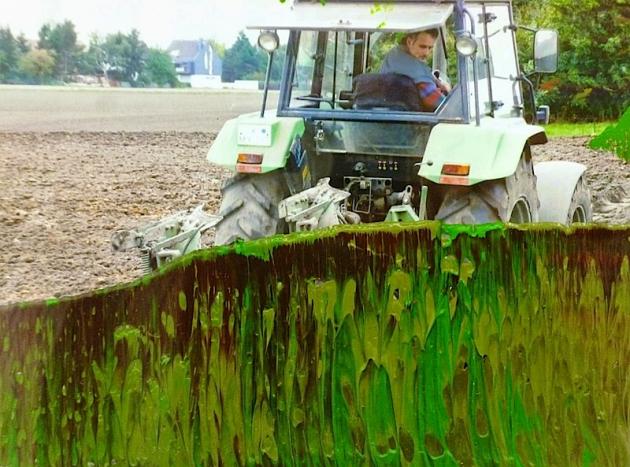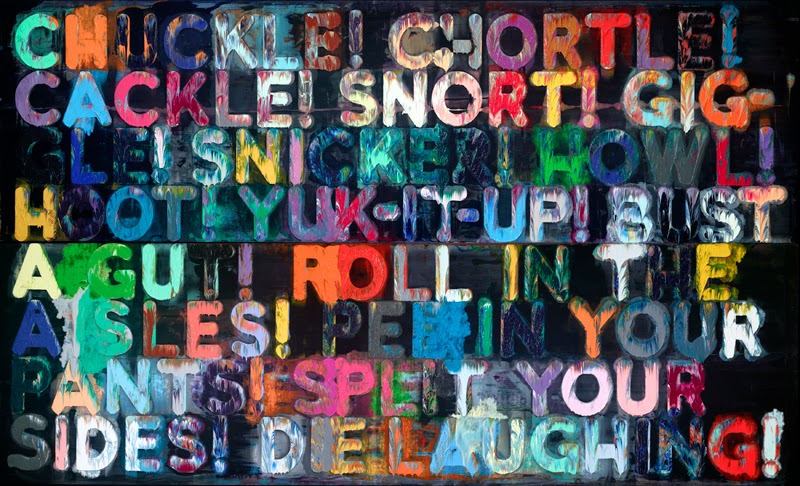London UK – So many new international galleries seem to be opening in Mayfair that one might get blasé… but Marian Goodman’s is heroically scaled, and kicks off with a refreshing account of Richter’s recent work: not the auction-friendly strands of scraped abstracts or blurred photo-realism, but… a seven-pane glass sculpture; eight of the rigorously self-deconstructing photo-derived ‘Strip’ versions of his own painting, the biggest ten metres wide; nine explorations of the grey monochrome, with oil on board, oil on glass and enamel behind glass showing their different effects; eleven ‘Flow’ paintings – multi-coloured pools of paint, its movement stilled by being trapped beneath glass; a particularly good set of 17 small oil on photograph works; and four colour-square works, cheekily installed to hint at the even grander space in which Richter has employed the motif in stained glass. This Adjaye-designed gallery isn’t quite Cologne Cathedral, but is closer than most…
Over the past five years Richter has been primarily concerned with a series of paintings premised on systematically deconstructing a photograph of his own abstract oil on canvas from 1990. Revisiting an idea he first employed in his late-seventies project ‘128 Photographs of a Painting’, he divided the work’s surface into two vertical sections, then halved those halves, and so on, subjecting them repeatedly to a premeditated procedure he described simply as ‘dividing, mirroring, repeating’. At the point when this digital process had generated 4,096 infinitesimal vertical sections, Richter intervened with a rigorous selection process, re-imposing his subjective will and choosing particular preferred strips with which to continue working. Following one further final halving and mirroring, he had each work printed to his desired scale, so that we might contemplate what have become remarkable horizontal, rhythmic fields of fine lines, oscillating with vibrations of colour, the largest of which stretches over ten metres, as seen on the gallery’s first floor. By tellingly entitling these unique works ‘Strip’ paintings, Richter is referring not to those lines, but both to the miniscule vertical strips they represent of their source and to the sense of physically ‘stripping’ – taking apart and dismantling his original painting. Of not only reinventing, but wholly paring down and fundamentally abstracting his own abstraction.
Mel Bochner: GOING OUT OF BUSINESS! (and other recent paintings on velvet) @ Simon Lee Gallery, 12 Berkeley Street – Central
Mark Hagen: A Parliament of some things @ Almine Rech Gallery, 11 Savile Row, 1st Floor – Central
To 14 Nov (Bochner) / 18 Nov (Hagen)
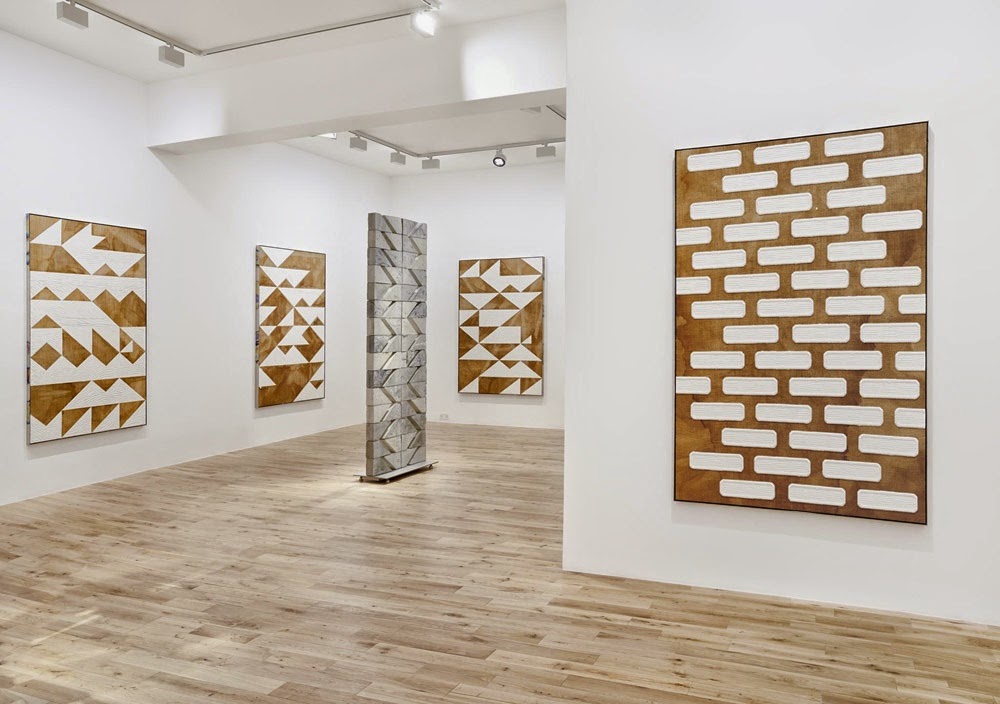 Mark Hagen installation
Mark Hagen installation
…and the stage darkens (or this voice is a big whale) @ Laure Genillard, 2 Hanway Place – Tottenham Court Rd
To 22 Nov: www.lglondon.org
 Franz Walther lithograph, 1974
Franz Walther lithograph, 1974
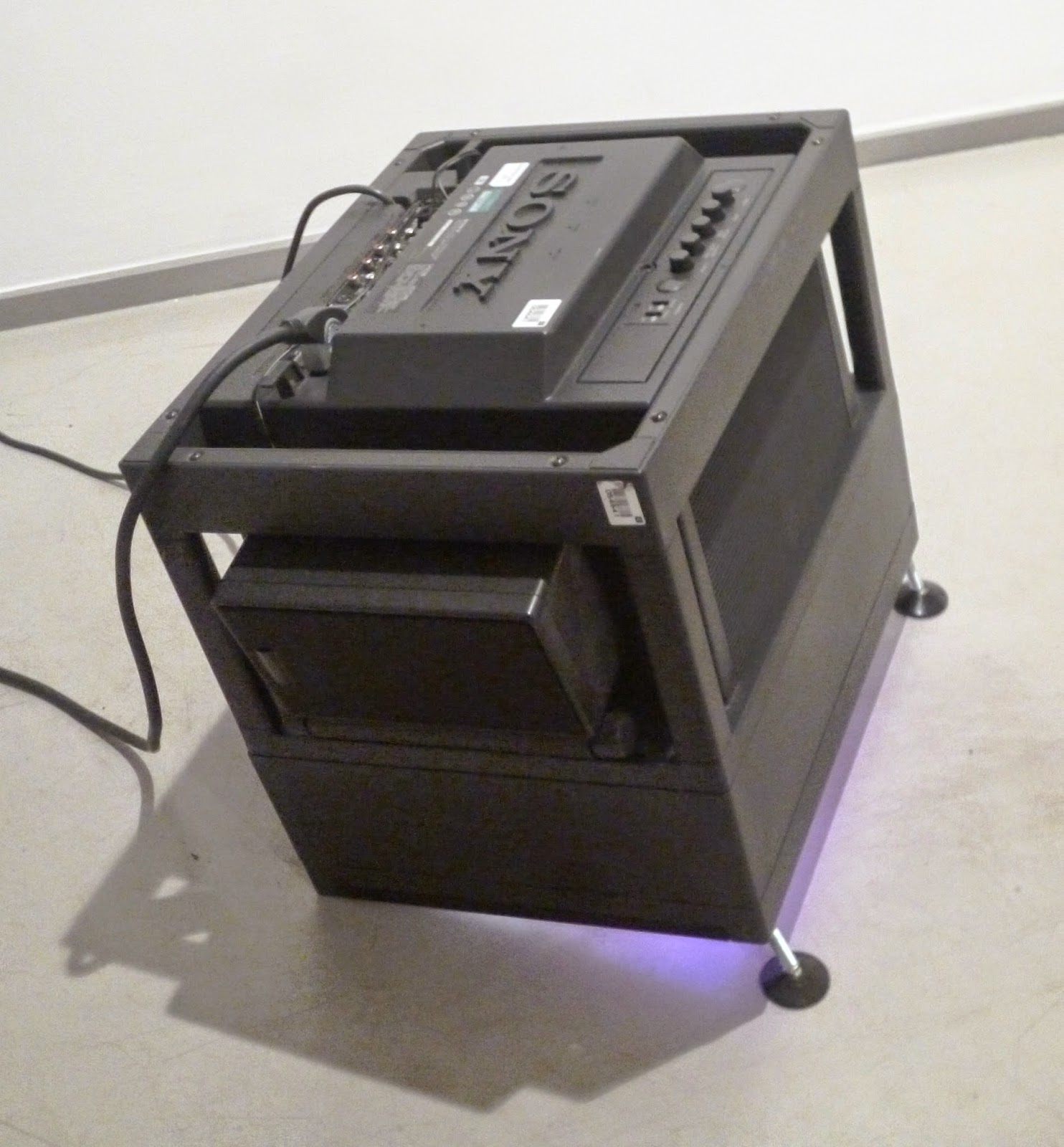 Laure Prouvost
Laure Prouvost
Martine Poppe: Anatidaephobia @ Kristin Hjellegjerde Gallery, 533 Old York Road – Wandsworth
To 16 Nov: www.kristinhjellegjerde.com
Paul Nash: Watercolours 1920-46 @ Piano Nobile, 129 Portland Road – Holland Park
To 22 Nov: www.piano-nobile.com
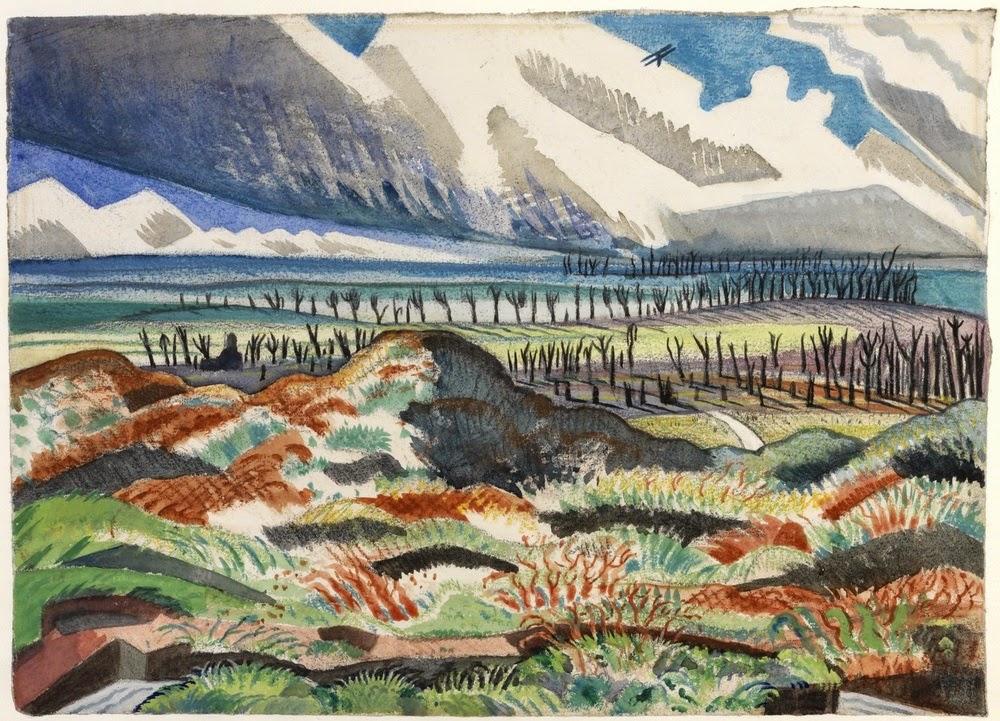 Ruined Country: Old Battlefield, Vimy, near La Folle Wood , 1917-18
Ruined Country: Old Battlefield, Vimy, near La Folle Wood , 1917-18
Paul Nash has no rival as an artist who captured both world wars, and there’s no doubt about what his art owes to the experience of conflict. Yet the landscape, modernised and psychologised (wounded ground, erotic trees) is what drives Nash’s uniquely persuasive combination of English and modern, and what better way to show that than through the immediacy of his watercolours? Piano Nobile has somehow gathered 35 of the highest quality, and commissioned David Boyd Hancock to write the exemplary catalogue. Quite possibly the best value show in London: £50,000 would secure you what I suspect is the passing fad of a David Ostrowski, or the perky ambiguities of ‘Comment on Leda’, 1935…
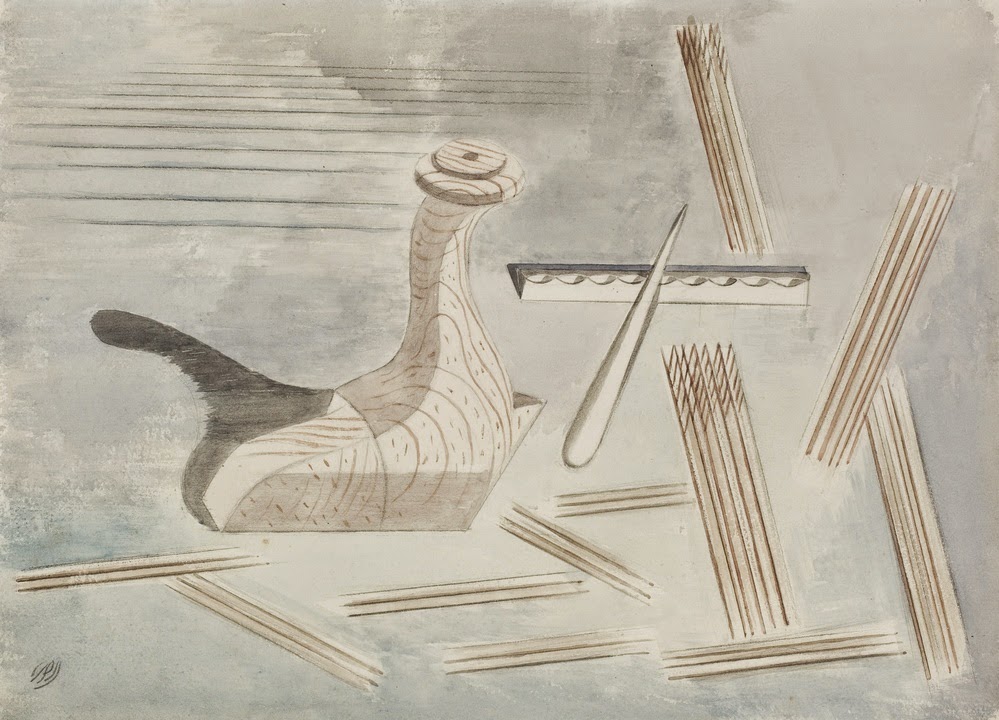 Comment on Leda, 1935
Comment on Leda, 1935
Justin Adian: Strangers @ Skarstedt Gallery, 23 Old Bond Street – Central
To Nov 22: www.skarstedt.com
Celia Hempton: Chat Random @ Southard Reid, 7 Royalty Mews (off Dean St) – Soho
To 22 Nov: www.southardreid.com
 Aldo and Jesi, Albania, 16th-august 2014 Celia Hempton has made a splash with a colourful and intimate paintings of those close to her. This new stream of work complements that by depicting ‘live’ 40 contrastingly anonymous subjects taken from her own interactions on the Internet site Chat Random. These reverse the usual power relationship between artist and model, as the model can terminate the process at any point. Sized to her computer screen, they are all male and often sexual – that’s the nature of the site – and she’s forced to work fast, faced by the chance aspect of when she will have to consider the painting finished. That helps energise and vary the resulting combination of digital and painterly worlds.
Aldo and Jesi, Albania, 16th-august 2014 Celia Hempton has made a splash with a colourful and intimate paintings of those close to her. This new stream of work complements that by depicting ‘live’ 40 contrastingly anonymous subjects taken from her own interactions on the Internet site Chat Random. These reverse the usual power relationship between artist and model, as the model can terminate the process at any point. Sized to her computer screen, they are all male and often sexual – that’s the nature of the site – and she’s forced to work fast, faced by the chance aspect of when she will have to consider the painting finished. That helps energise and vary the resulting combination of digital and painterly worlds.Control Lapse @ Josh Lilley, 44-46 Riding House Street – Fitzrovia & Brand New Second Hand @ Vigo, 21 Dering St – Mayfair
To 10 Nov (Vigo) / 28 Nov (Lilley)
 Kathleen Ryan’s glazed ceramic and epoxy putty over steel stair rail
Kathleen Ryan’s glazed ceramic and epoxy putty over steel stair rail
Control Lapse consists of cast objects, the title indicating that the nine artists chosen – largely American – allow processes to develop their own logic. The standard is high: this is the first London show for Scott Niall Macdonald’s clinically surreal combinations of objects cast into white plaster purity. Ruairiadh O’Connell combines security railings with casts of net curtains caught up in them in a stand-off of privacies, linking neatly to Kathleen Ryan’s ceramic cast over a railing, which takes on an angularly animated pose. An obvious missing artist is Nika Neelova… But no problem: her latest castings, silicon rubber versions of the packaging from her own discarded sculptures, so refocusing onto her own practice her way of trapping the past in the present, are one of several highlights in the excellent ‘Brand New Second Hand’ at Vigo. I could also mention Matthew Barney’s decidedly high end castings in zinc, gold and silver at Sadie Coles, which include examples of the ‘water casting’ process whereby molten metal is poured directly into water.
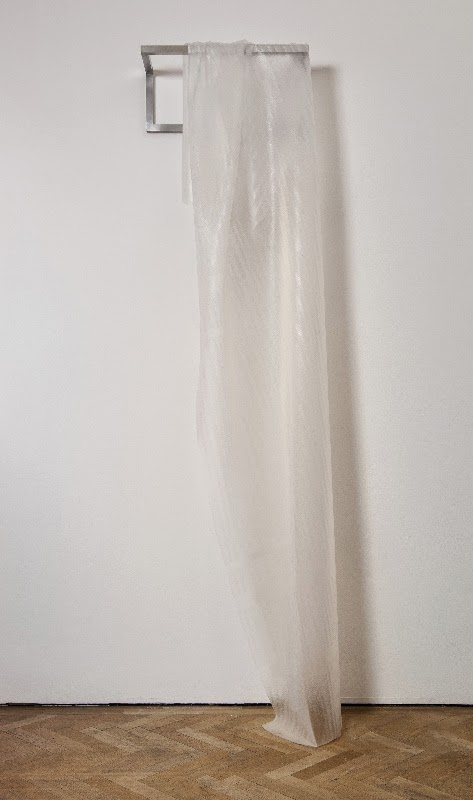 Nika Neelova 2011-2014 (the practice of conscious dying), 2014
Nika Neelova 2011-2014 (the practice of conscious dying), 2014
AIko Miyanaga’s interest in origins, in whether one can pin down the decisive moment at which one thing becomes another, feeds into some gently impressive work for White Rainbow’s inaugural show. Items – notably keys set to unlock the knowledge in resin books – are cast in the volatile compound of naphthalene, better known from moth balls, which evaporates and resolidifies according to conditions. That leads to frost the glass of enclosed items. In the back room is a subtle in which you can – no, really – hear the sound of ceramic pots.
Soramimimisora
To 15 Nov: www.berlonigallery.com
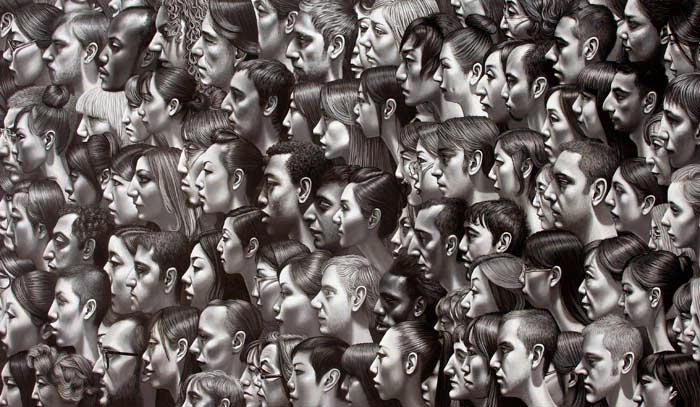 Tokyo Portrait 2, 2011 Carl Randall’s practice all stems from observation of people, but leads to very varied results from individual portraits (sometimes knowingly kitsch) to orientally-styled ink drawings to storyboard triptychs putting faces into their life contexts to the combination of many individuals into serried and meticulous multi-portraits which suggest isolation in the midst of overcrowding. Those last are Randall’s signature and strongest works, along with a grid of 68 instant hand-sized sketches by which he notes characters seen on the underground.
Tokyo Portrait 2, 2011 Carl Randall’s practice all stems from observation of people, but leads to very varied results from individual portraits (sometimes knowingly kitsch) to orientally-styled ink drawings to storyboard triptychs putting faces into their life contexts to the combination of many individuals into serried and meticulous multi-portraits which suggest isolation in the midst of overcrowding. Those last are Randall’s signature and strongest works, along with a grid of 68 instant hand-sized sketches by which he notes characters seen on the underground.
______________________
What Marcel Duchamp Taught Me @ The Fine Art Society, 148 New Bond Street – Central
To 5 Nov: www.faslondon.com
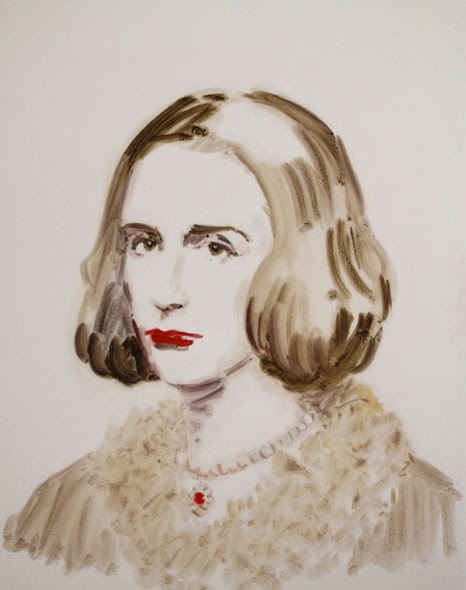 Annie Kevans: Marcel Duchamp as Rrose Selavy, 2014
Annie Kevans: Marcel Duchamp as Rrose Selavy, 2014
The oldest commercial Gallery space in London commemorates 100 years since Duchamp’s first ready-made with a riot of a show: over 50 artists on all five floors provide thoughts on the great enigma as well as work inspired by him, plus you can take a knockabout guided headset tour of the building’s history. It’s uneven, but all entertaining, and among the many highlights are Juliette Losq’s take on Étant donnés, Alistair Mackie’s forest and cuttlebones, Alex Seton’s marble Glory Hole and Cedric Chritsie’s branding of the stairwells. Among the artists’ comments I was struck by David Mach (‘Duchamp didn’t just move the goalposts, he obliterated the pitch’) and David Shrigley quoting Bruce McLean: ‘all the best artists piss about. Duchamp was brilliant at pissing about.’
 Michael Craig Martin: Art and Design, 1917, 2013
Michael Craig Martin: Art and Design, 1917, 2013

John McAllister: botanic ocean, 2014
Nogah Engler & Ori Gersht: Virgin Parade 02, 2014

